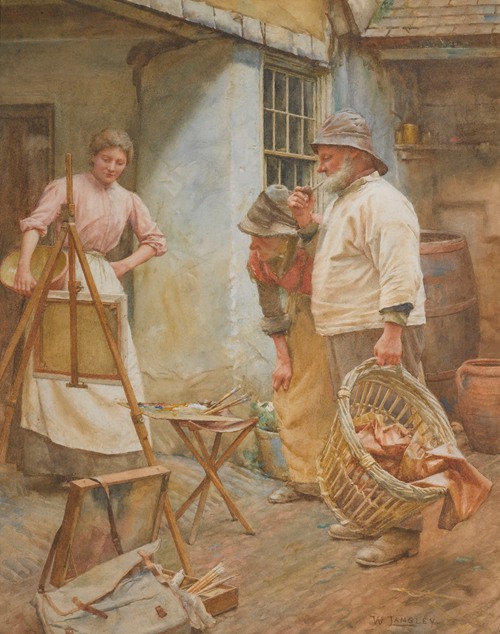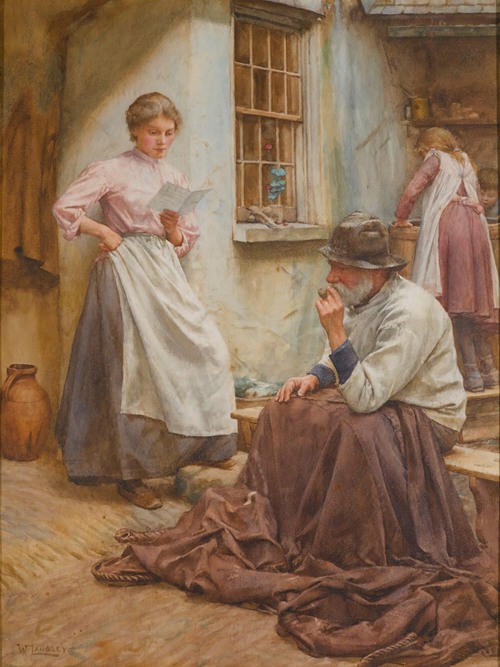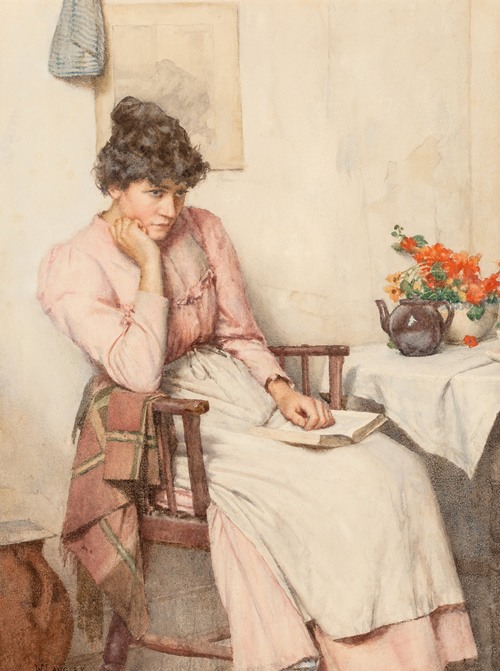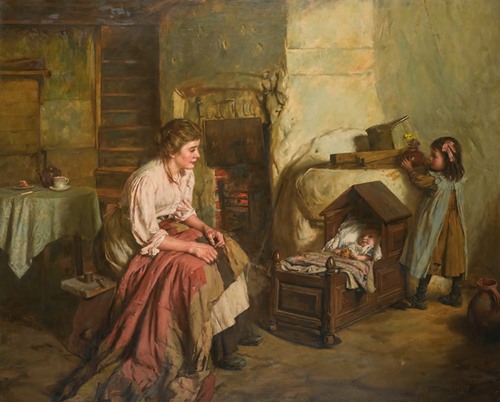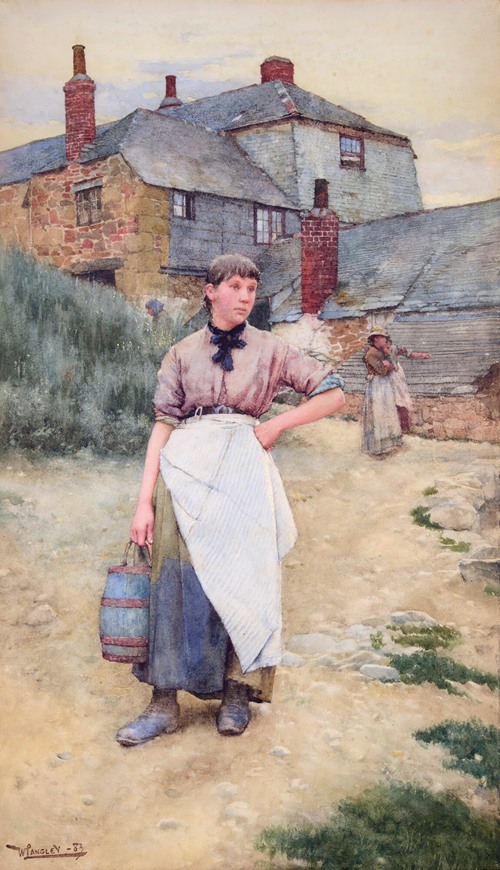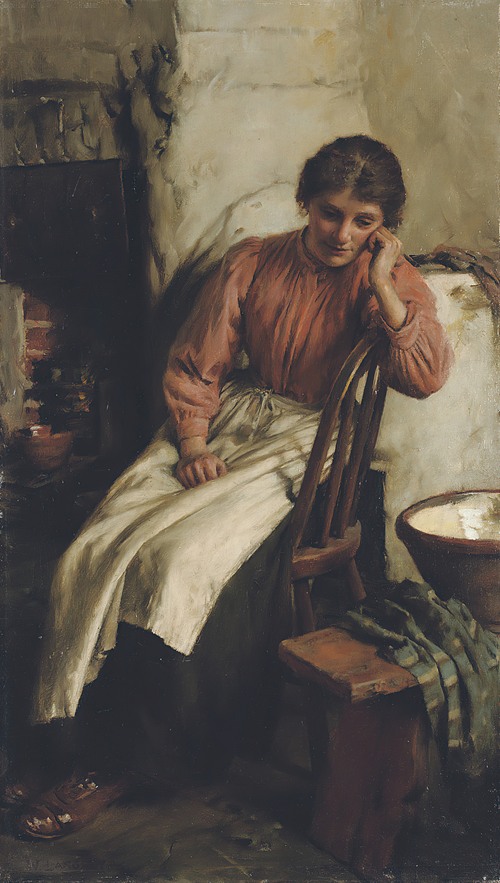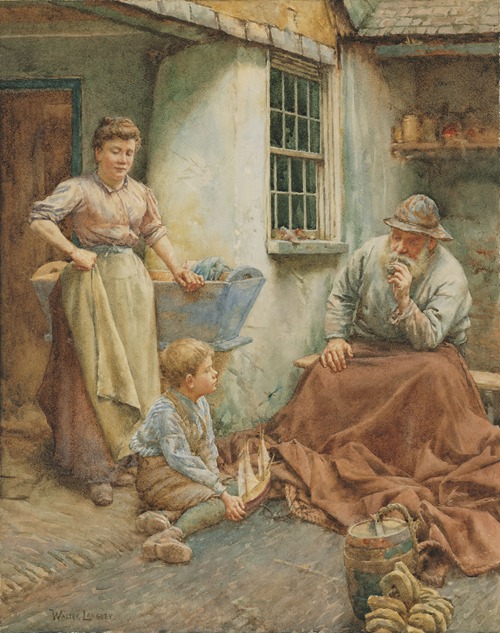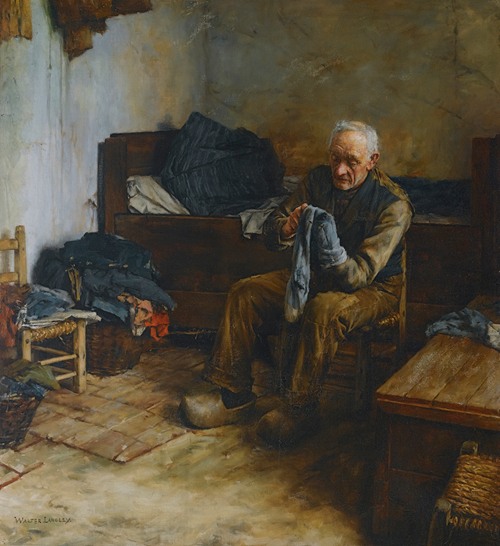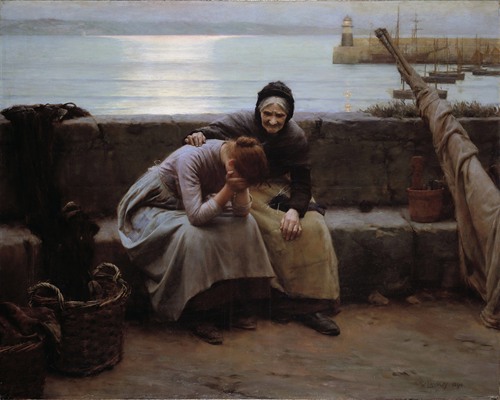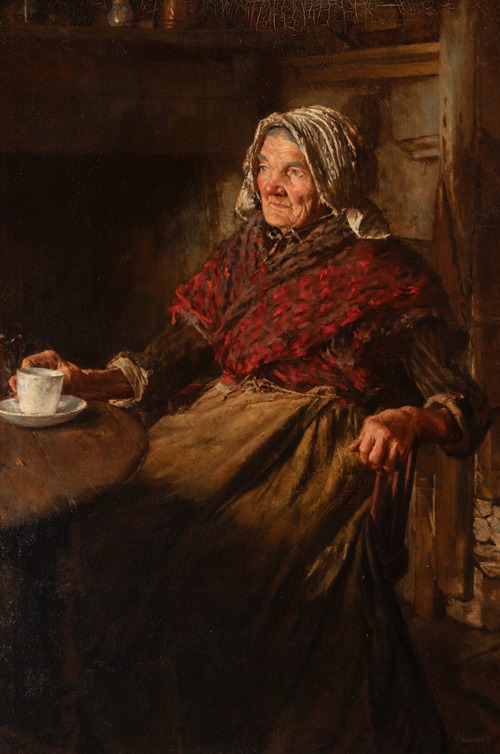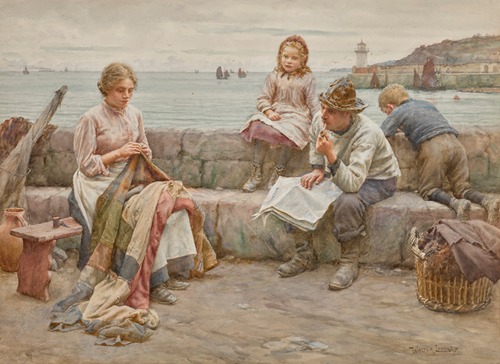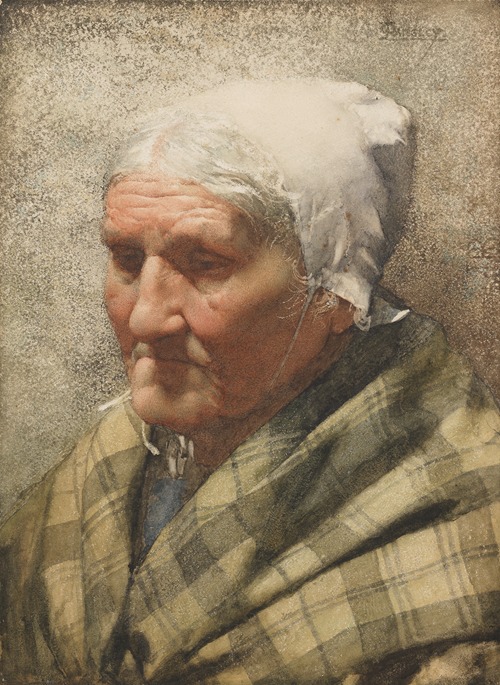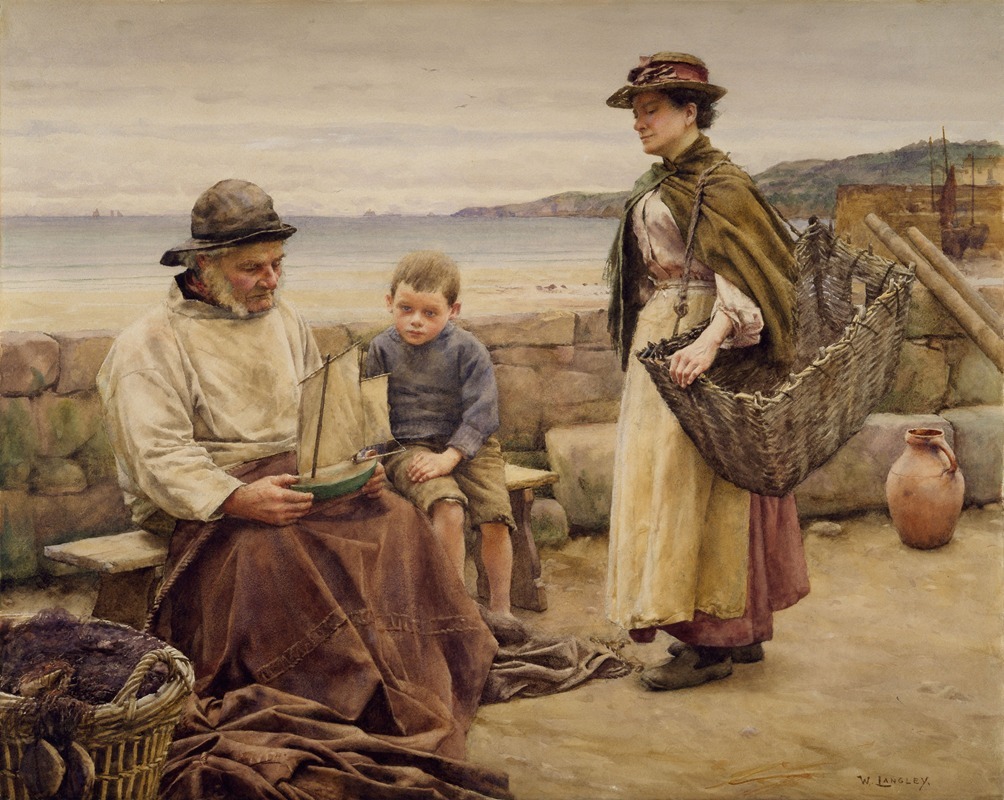

Walter Langley was an English painter and founder of the Newlyn School of plein air artists.
He was born in Birmingham and his father was a journeyman tailor. At 15 he was apprenticed to a lithographer. At 21 he won a scholarship to South Kensington and he studied designing there for two years. The sometimes highly ornate work is mainly in gold and silver and in a Renaissance style. He returned to Birmingham but took up painting full-time, and in 1881 was elected an Associate of the Royal Birmingham Society of Artists. In the same year he was offered £500 for a year's work by a Mr Thrupp (a Birmingham photographer). With this money he and his family moved to Newlyn where he was one of the first artists to settle and began recording the life of the fishing community.
Politically left wing for his era, he was noted for his social realist portrayals of working class figures, particularly fishermen and their families.
Although one of the first to settle in the Newlyn artists' colony Newlyn School, Langley initially benefited little from its growing fame, partly because of his working-class origins and partly because until 1892 he painted largely in watercolour rather than the more prestigious medium of oils. His early training in lithography gives his paintings a detail and texture that show his technical skills.
In 1884, Langley was elected a member of the RBSA and continued to exhibit widely throughout the UK and abroad.

